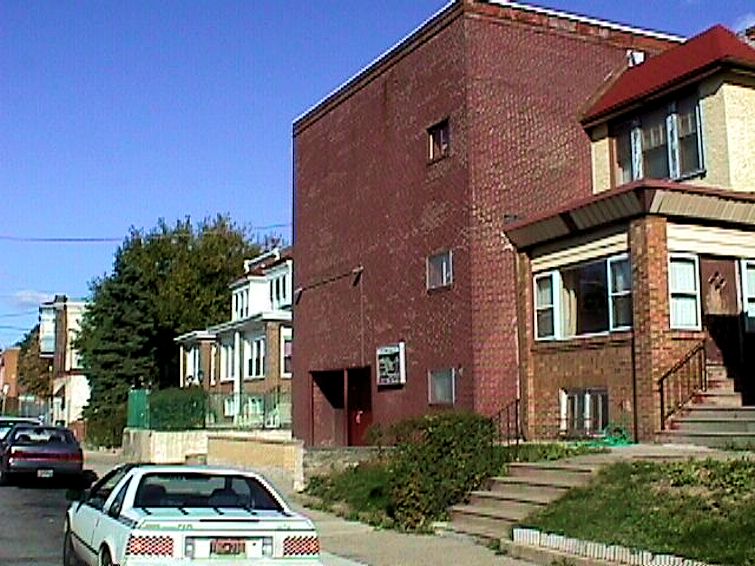1999.11.28
(in) reality
1. "no design ever proved something (anything?)"
2. Charlotte Geldof's "sacred and profane" tour.
3. depth - archaeology, underground street, crypt, sinking.
4. German (-American) artists and architects.
5. NeTHCA @ quondam?
6. immediately meeting two Elenis.
7. auto-eroticism - "Where did that orchestra come from?"
8. credentials: a PhD in reŽnactment from the Institutes of Ottopia.
9. Tom Avermaete - look at the promenade architecturale and "letter to/from India"
10. an instant click with Bernard Kormoss.
11. finding Romulus and Remus in Brussels
12. Eleni Kostika asks: "What is schizophrenia + architectures about?" - part of it is about breaking rules and rules already broken.
13. the extremes of Taipei - Li Mei Tsien.
14. digital cameras may put people in architecture.
15. David Vanderburgh is an American.
16. joining NeTHCA?
17. meeting Elia Zenghelis - the Greek island villas.
18. breakfast with Winka Dubbeldam.
19. new capitals: once Philadelphia, now Brussels.
20. dinner conversation with Annemie.
21. a brief chat with Eric - virtual infrastructures.
22. driving with Hilde Heynen and Mark Wigley.
23. Jackson Pollock's paintings relative to Piranesi's Campo Marzio - Olivier Mathieu.
24. redemption via the group symposium.
25. Martine drives a Mercedes!?!
26. lunch conversation with Mark Wigley.
27. Oskar rolls me a cigarette and we then discuss the virtual nature of Quondam.
28. "How does one gauge young?"
29. Joe: the devil in Orlando cracks the whip?
30. Pollock spontaneity
31. atomized dinner.
32. doing it to ourselves.
33. "Tafuri didn't translate Piranesi's Latin text."
34. walking home with Leslie.
35. Sarah Whiting: "Who are you?"
36. the Andy Warhol fame police
37. the Pollock museum.
38. breakfast with Leslie, and then Winka too.
39. there is no laughing in the VSBA office.
40. Peter Nys visited Quondam.
41. no camera - "using your own lenses."
42. Peter Zellner - Christian inversion of Rome
43. out of the virtual.
44. saw that (many times) before
45. my presentation.
46. getting it or not getting it.
47. thanks, thanks, reenactment, thanks (dinners)
48. Hitler's/Speer's Triumphal Arch.
49. fight on the street.
50. the SOM building detail - like at Ferko.
| |

Louis I. Kahn Ahavath Israel Synagogue Philadelphia 1937 image 1998.10.29
2002.08.16 13:49
Re: 1000 Kunstler
Interesting how Denise Scott Brown mentions "A small church or synagogue, set within a row of town houses or surrounded by office buildings, holds its own with dignity" in her editorial/op-ed piece on development of Lower Manhattan in today's NYTimes.
|
| |
1999.12.30 12:18
face to face
Mark wrote:
BTW, I really enjoyed your posts on your trip to Brussells! Especially the epiphany of dealing with flesh and blood humans face to face!
Steve replies:
Mark, you only mention part of the 'epiphany' in that what overwhelmed me the most was not the meeting of Charlotte Geldof, although Charlotte certainly is one of the best people I've yet to meet, but that Charlotte poignantly confirmed that my virtual friendship with Anand Bhatt was something real. I told Charlotte that I 'see' Anand as a very intense person, but also a very sensative person. I told Charlotte that in one of the very first exchanges between Anand and myself, I asked him if he would consider the piece of writing he sent as "Indian". I asked this because the passage somewhat mysteriously evoked a distinct image of a place in India in my mind. To my surprise, Anand wrote back that he has a real difficulty with understanding what is meant by "Indian", and then he kind of apologized because the "Indian" issue is a particularly sensative subject for him. For me that episode was a true instance of really being so close yet really being so far.
The truth for me here is that I am very happy to now know Anand, and I would of course greatly enjoy meeting him in person, especially in India, but I cannot ignore that it was indeed the virtual realm of cyberspace that brought us together. And for that matter, Mark, I occassionally think of you too, because of our exchanges here within design-l. You are the person that introduced me to Native American mound sites of the Midwest, and that's why I recently purchased (at eBay) William N. Morgan's Prehistoric Architecture in the Eastern United States (MIT Press, 1980).
|
